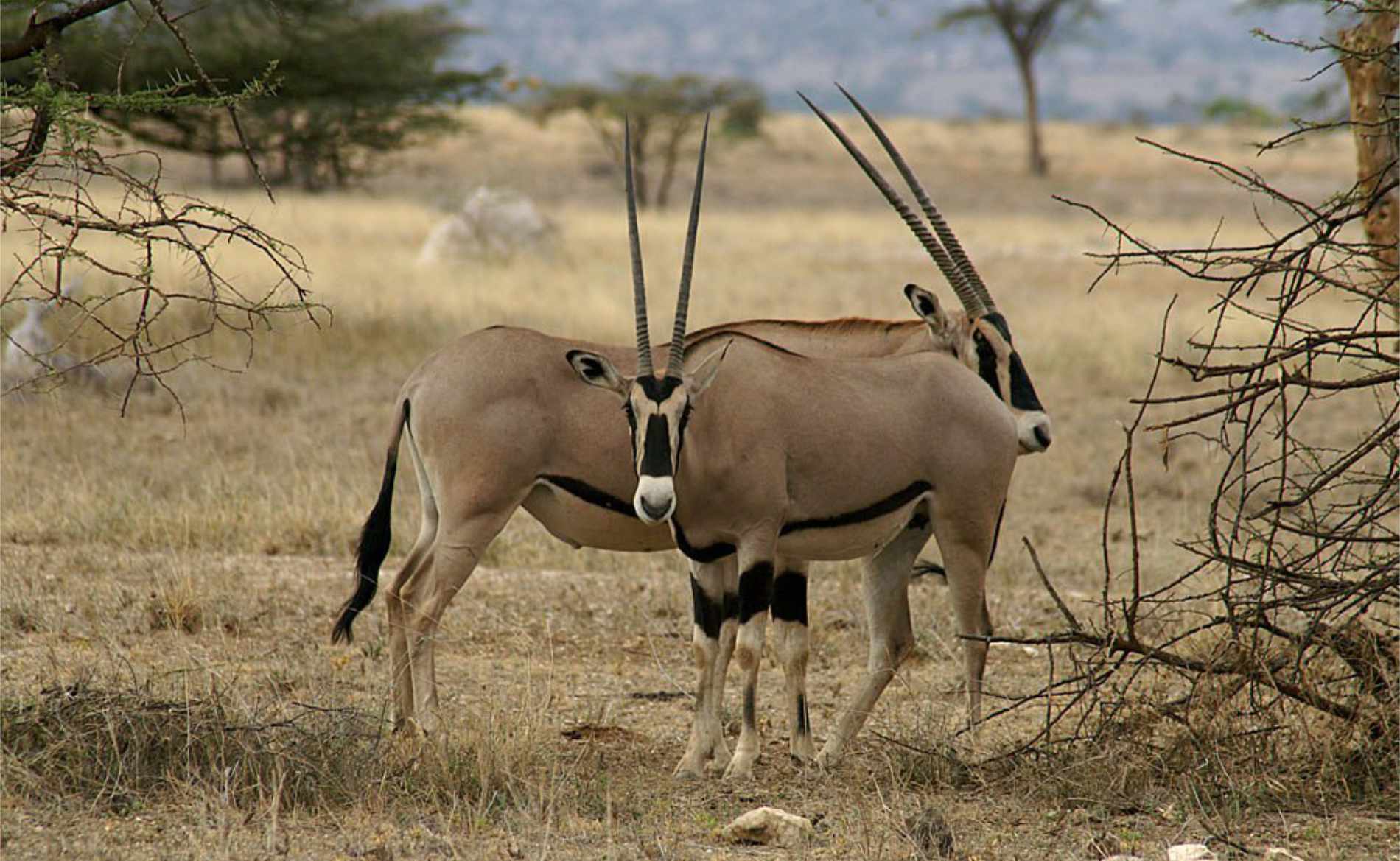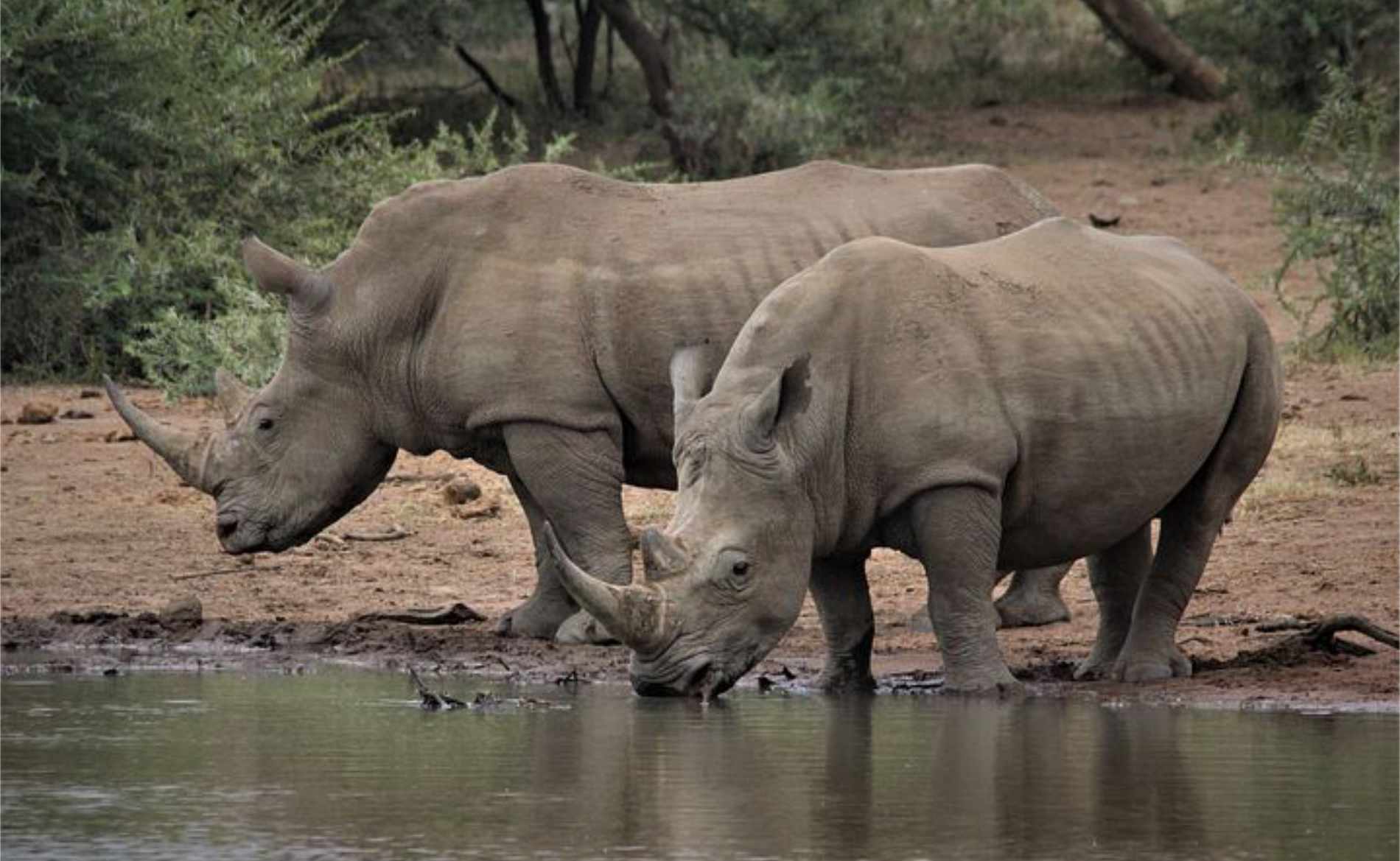Mkomazi National Park: Safari away from the crowds with rhinos and African wild dogs in the park’s own conservation area
Facts Mkomazi National Park:
- Founded as a game reserve in 1951, only became a national park in 2006
- There is a special conservation program for black rhinos and African wild dogs
- Less visited than the national parks in the Northern Safari Circuit
- Together with the neighboring Kenyan Tsavo National Park to the north, an important ecosystem
- There is only a couple of luxury accommodations and several campsites in the park itself. There are several local lodges in the nearby town of Same
- Size: 3,250 km2 = more than twice the size of London
Best time to visit:
- During the dry season from June to October, you have the best chance of spotting lots of wildlife thanks to the short grass
- From November to May you may encounter more or less rain, but the landscape is green and you get a great view of the surrounding mountains. During this time, the elephants from neighboring Tsavo National Park in Kenya also migrate to Mkomazi and there is a variety of migratory birds to observe
- During the main rainy season from March to May, some roads are in poor condition and only partially passable
Getting here from Arusha:
- Around 200 km = four and a half hours by safari car, ideal to combine on the way to the Usambara Mountains or the coast
Highlights Mkomazi National Park:
- Observe rhinos and African wild dogs in the park’s own conservation area
- Marvel at the rare giraffe gazelles, small kudus and oryx antelopes
- Let your gaze wander from the dry savannah over the surrounding hills of the Usambara and Pare Mountains
- Experience a safari away from the crowds
Mkomazi National Park is more than twice the size of London and borders Tsavo National Park in Kenya to the north, making the two parks the second largest ecosystem in the two countries with global significance after Serengeti and Maasai Mara. Mkomazi Tanzania was only declared a national park in 2006. Since then, protected areas have been established for two endangered species, the black rhino and the African wild dog. In the 1980s, due to uncontrollable poaching, some black rhinos were brought to safety in South Africa. These rhinos were gradually brought back by plane and reintroduced into the 55 km2 sanctuary. To this day, the black rhino is threatened with extinction. The African wild dog is also an endangered species. Unlike our domestic dogs, these striking, spotted animals only have four toes on their paws. They live together in packs and have a hierarchy and social system. Visiting the two reserves is possible by appointment, which definitely increases the chances of seeing a black rhino up close or spotting a pack of wild dogs.
In terms of landscape, Mkomazi National Park Tanzania forms the southern tip of the Sahel zone, which is like a dry savannah. Due to the scarcity of water, the park is mainly home to acacia trees. The word Mkomazi also has a connection with the scarcity of water. In the language of the nearby Pare tribe, “Mko” means small spoon and “Mazi” means water. The Pare Mountains border the national park to the west and the Usambara Mountains to the east. There are great views of green hills in many places. On a clear day, you can even see Mount Kilimanjaro in the distance.
Hobby ornithologists get their money’s worth in Mkomazi National Park, as there are up to 450 different bird species. Frequent sightings include dunnocks, buzzards, ostriches, crested eagles, hornbills, guinea fowl and weavers. Birdwatchers can also spot the impressive martial eagle, the small, handsome plains hoopoe, numerous storks and corvids as well as the graceful secretary birds.
Mkomazi is home to the rare species of lesser kudu, oryx and gerenuk (also known as giraffe gazelles), which are not found in the northern national parks of Tanzania. The cute giraffe gazelles with their long necks, small heads and large ears can stand on their hind legs and eat the leaves of the thorny acacias, of which there are many in the park. Due to the relative dryness, there are not quite as many animals in Mkomazi National Park as in other national parks. However, you can of course also spot “real” giraffes, wildebeests, zebras, buffaloes, elands and other gazelles. There are also predators, including lions, leopards, cheetahs, jackals and hyenas. In and after the rainy season, large herds of elephants migrate from the neighboring Tsavo National Park to Mkomazi National Park. The beauty of Mkomazi is that it is not at all overcrowded due to its location in the opposite direction to the national parks of the Northern Safari Circuit. So you can be sure to have virtually all the wildlife sightings to yourself. This makes a visit to the park definitely worthwhile for the individual tourists among you. Especially as Mkomazi National Park is on the way to the Usambara Mountains and the coast, so if you want to do a bit of hiking and stop for a swim anyway, Mkomazi National Park is right on the way.







